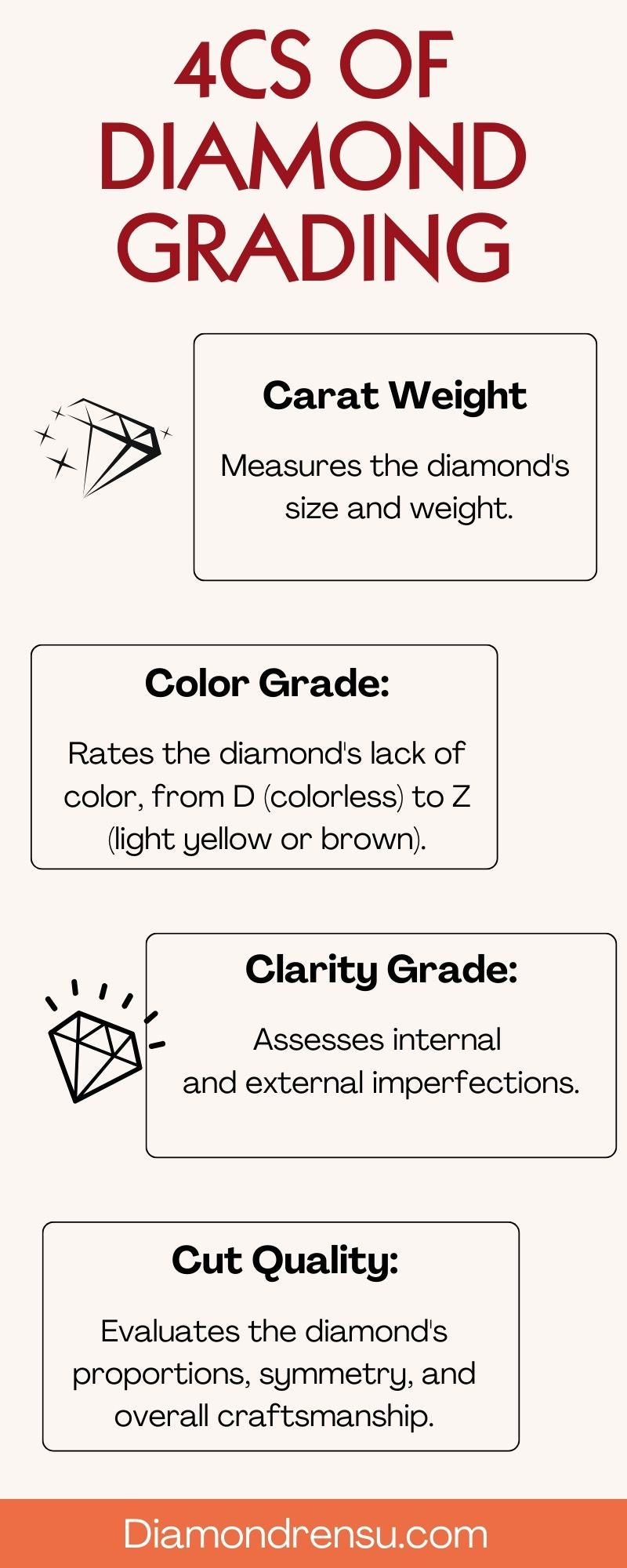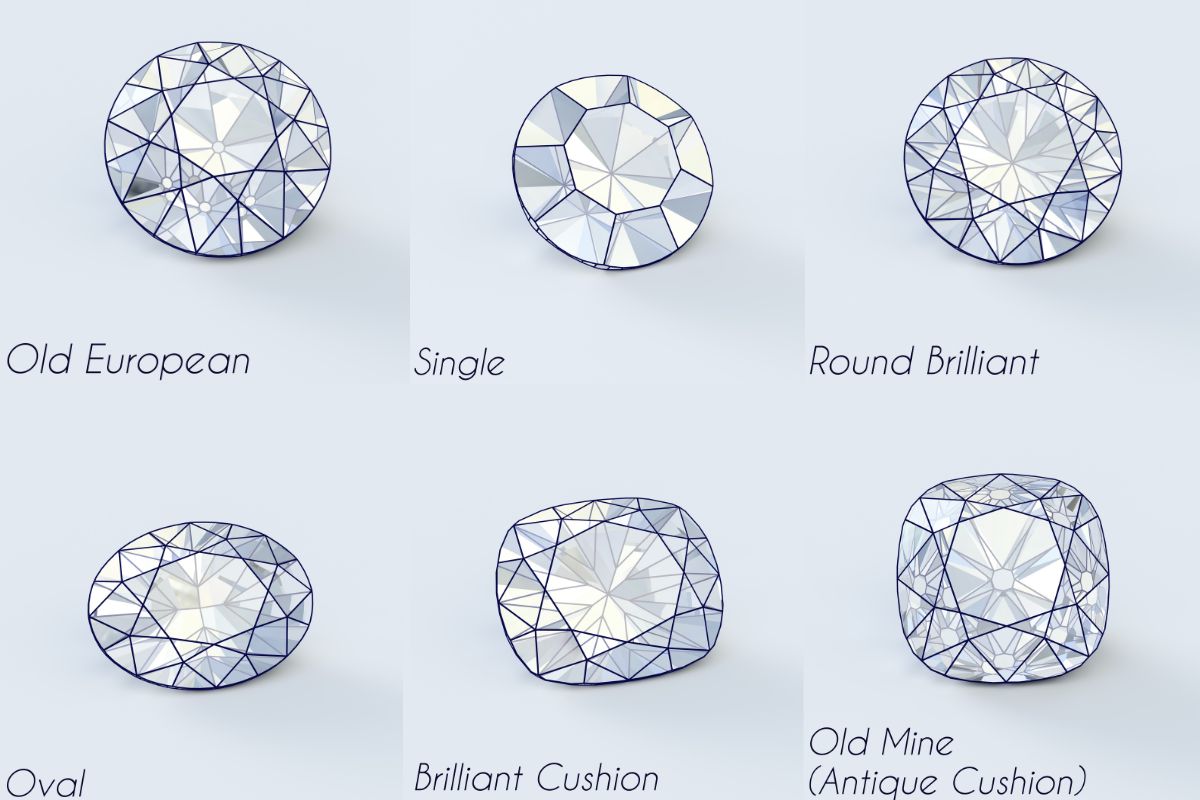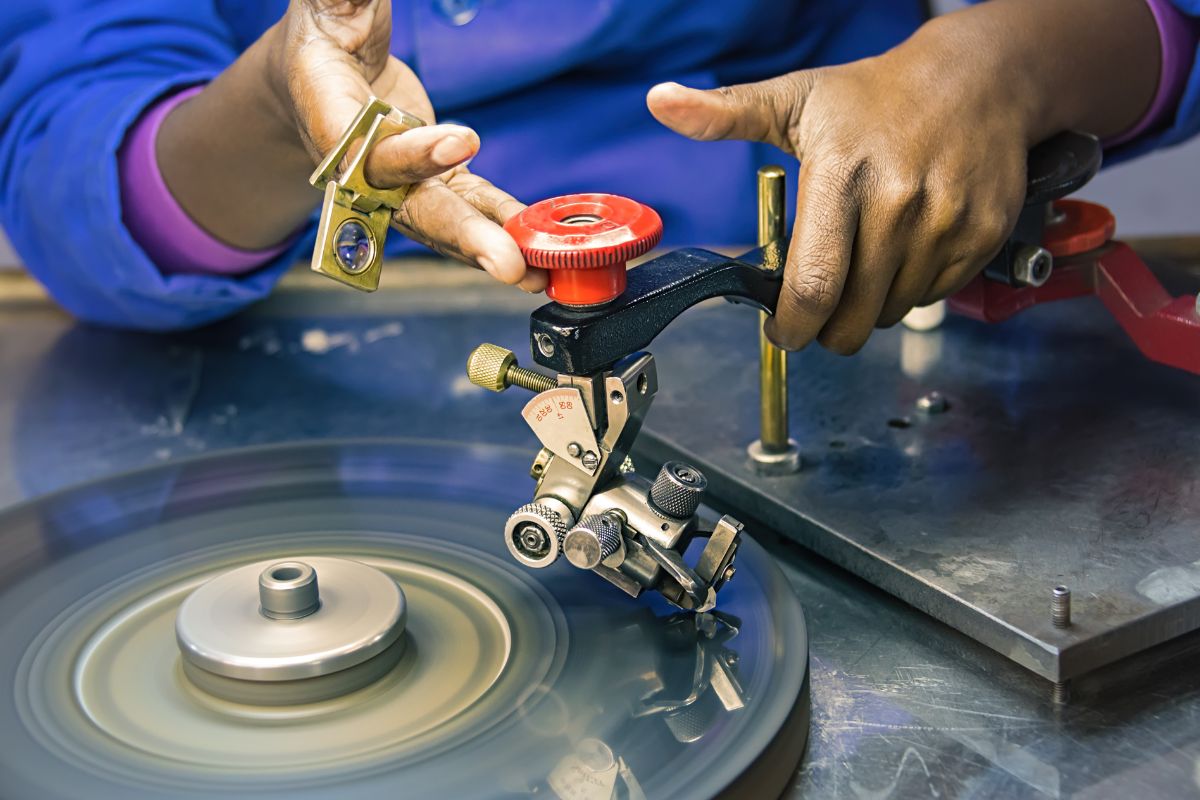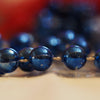
Old Mine Cut vs Old European Cut: Decoding Vintage Diamond Shapes
When exploring the world of antique diamonds, the old mine cut and old European cut diamonds often take center stage due to their historical significance and unique aesthetic qualities. These diamond cuts, crafted before the advent of modern shaping techniques, carry with them the charm of a bygone era. As enthusiasts and collectors, we appreciate the old mine cut for its origins in the 18th century, which bears a resemblance to the original rough diamond as it was excavated from the mine. In our quest to retain authenticity and rarity, the old mine cut's cushioned shape and the manner in which it captures light are valued for their distinctive look.
Table Of Contents
- Historical Evolution of Diamond Cuts
- Analyzing Antique Diamond Characteristics
- Distinguishing Old Mine Cut and Old European Cut Diamonds
- The Jewelry Context of Antique Diamonds
- Modern Relevance and Adaptation
- Technical Aspects of Cutting Styles
- Cultural Significance and Influence
- Acquisition and Care of Antique Diamonds
- Frequently Asked Questions
Transitioning from the earlier old mine cut, the old European cut diamonds emerged in popularity. They maintained certain classic features of their predecessor, such as the large culet and small table, but introduced a rounder shape that was a precursor to today’s modern round brilliant cut. While they share some similar characteristics, we differentiate these two antique cuts by their faceting pattern, shape, and the type of brilliance and fire they exhibit. We understand that the subtleties in the crown height, table size, and cutlet dimensions between the old mine and old European cuts influence not only their appearance but also how they interact with light.
Historical Evolution of Diamond Cuts
Diamond cuts have undergone significant transformations from the early Old Mine Cut to the Old European Cut, and eventually to the Modern Round Brilliant Cut. These developments reflect advancements in cutting techniques and changing tastes over centuries.
Early Diamond Cuts
Diamonds were initially polished with simple cuts like the point cut and table cut.
Old Mine Cut & Old European Cut
The 18th and 19th centuries saw the development of the Old Mine Cut and Old European Cut, featuring deeper facets.
Brilliant Cut
The 20th century introduced the Brilliant Cut, optimizing light refraction for maximum sparkle.
Modern Cuts
Today, diamond cutting includes a variety of shapes and styles, such as the Princess Cut, Emerald Cut, and Asscher Cut.
Origin of Old Mine Cut
The Old Mine Cut traces its roots to the 18th century. It emerged prominently during the Georgian and Victorian eras. This antique cut was fashioned to optimize the sparkle of diamonds in candlelight. Characterized by its squarish shape with rounded corners, it was primarily hewn by hand, lending each stone a unique appearance.
Development of the Old European Cut
As cutting technology evolved during the 19th century, the Old Mine Cut gave way to the Old European Cut. The latter became prevalent towards the end of the century, embodying the spirit of the Art Nouveau and Victorian aesthetic movements. It offered a more uniform, round shape and was a direct precursor to today's brilliant cuts, yet it still retained the deep pavilion and large open culet reflective of its historical context.
Transition to Modern Round Brilliant Cut
By the early 20th century, the relentless quest for brilliance led to the dawn of the Modern Round Brilliant Cut. Pioneered by diamond cutters like Marcel Tolkowsky, this cut employed precise mathematical calculations to maximize light return. Its 58 well-defined facets marked a significant departure from its predecessors, revolutionizing the diamond industry and cementing the Old Mine and Old European Cuts as treasured antiques.
Analyzing Antique Diamond Characteristics

In evaluating antique diamonds, we must pay careful attention to the specific qualities such as carat weight, color, and clarity, as well as how the facets, table, and culet influence the diamond's overall appearance and performance.
Understanding Carat, Color, and Clarity

- Carat: This term refers to the weight of the diamond. Antique stones like old mine and old European cuts often retain more carat weight by modern standards due to their deeper cut.
- Color: The color in antique diamonds can vary, but they often exhibit a warmer tone, with color grades that can range from the colorless to visibly yellow or brown hues.
- Clarity: Clarity involves the evaluation of internal and external characteristics. Antique diamonds may have clarity grades that range from flawless to those with visible inclusions, which were more acceptable and common in past cutting eras.
Antique jewelry with these diamonds is appreciated for the unique charm of each stone's characteristics, where a slight trade-off in clarity or color is often embraced for the diamond's historical value.
Role of Facets, Table, and Culet
- Facets: The arrangement of facets in old mine and old European cuts is designed to maximize sparkle under candlelight conditions. The proportions and symmetry differ from modern cuts, providing a distinctive type of brilliance.
- Table: The table, or the flat surface on the top of the diamond, in antique diamonds is usually smaller compared to modern diamonds, which contributes to their unique sparkle and depth.
- Culet: Historical cuts like old mines and old Europeans often feature a large culet, which is the tiny flat facet at the bottom of the diamond. A large culet can give a diamond a more rustic look, which is a coveted characteristic in antique jewelry.
Antique diamonds reflect our history's craftsmanship, with the high crown, large culet, and unique facet patterns being key indicators not often found in modern cutting styles. These attributes affect the diamond's quality and value in ways distinct from contemporary gems.
Distinguishing Old Mine Cut and Old European Cut Diamonds

In this section, we're going to examine the specific characteristics that set Old Mine Cut and Old European Cut diamonds apart, focusing on their shape and proportions, as well as their distinctive brilliance and fire.
Shape and Proportion
Old Mine Cut diamonds, often referred to as "Old Mine-cut" diamonds, possess a squarish shape with rounded corners, closely resembling the modern cushion cut diamond. Their appearance is not always perfectly symmetrical due to the hand-crafted nature of each diamond, which adds to their individuality and rarity.
On the other hand, Old European Cut diamonds embody a shape that precedes the modern round brilliant cut. Unlike the more cushion-like shape of the Old Mine Cut, the Old European Cut is more circular and is considered an early version of today’s round cuts. When observed closely, Old European Cuts have a higher crown, smaller table, and a more profound pavilion compared to modern round brilliants.
Brilliance and Fire
The way an Old Mine Cut diamond interacts with light is significantly different from that of an Old European Cut. The Old Mine Cut’s larger culet and less precise facet arrangement contribute to a distinctive sparkle, which can be described as a softer and more diffused 'glow' rather than the sharp brilliance seen in modern cuts. This cut often exhibits a warmer, sometimes deeper fire, which is the play of colors you see in a diamond.
Conversely, the Old European Cut diamonds exhibit stronger fire compared to their Old Mine counterparts but display less brilliance than the current round brilliant cut diamonds due to the different pattern of facet arrangement. The contrast pattern in an Old European Cut diamond tends to be more pronounced, providing a unique performance of light and color that is highly sought after by both collectors and enthusiasts of antique diamonds.
The Jewelry Context of Antique Diamonds

Antique diamonds such as the old mine cut and the old European cut diamond bring a profound sense of history and uniqueness to jewelry, particularly in engagement rings and other heirloom pieces. They embody the romance and commitment of eras past, with craftsmanship that tells a story in each facet.
Influence on Engagement Ring Designs
The old mine cut diamonds have directly influenced modern engagement ring designs by offering an alternative to the prevalent round brilliant cut diamond. Our fascination with vintage aesthetics means these antique cuts are often set in rings to evoke a classic look.
- Solitaire Settings: Old mine cuts are prominently featured as solitaires, showcasing their squared cushion shape.
- Side Stones: Both old mine and old European cuts are frequently flanked by smaller diamonds to accent their geometric beauty.
With the increasing desire for unique engagement rings, these vintage gems provide an authentic edge in our diamond buying process.
Legacy in Diamond Jewelry
Our appreciation for antique diamonds extends beyond engagement rings. We frequently see old European cut diamond rings as well as other pieces such as earrings and pendants, treasured by collectors and connoisseurs alike.
- Metal Choices: While platinum and gold settings were common in the past, these metals continue to be the preferred choice for setting these timeless diamonds.
- Diamond Prices: As old mine and old European cuts are sought after for their history and rarity, their prices can reflect this demand, yet they often present a more accessible price point compared to modern cuts.
The GIA (Gemological Institute of America) certification isn't typically applied to these antique stones, as their value is largely based on their unique history and cut. Our role as jewelers is to guide through this history-rich segment of diamond jewelry with confidence and clarity.
Modern Relevance and Adaptation

Old Mine and Old European cuts become the bridge between the romance of the past and the brilliance favored in modern diamonds. Our section explores their continued significance in today's jewelry landscape.
Contemporary Use in Fine Jewelry
Old Mine and Old European cut diamonds find a cherished place in fine jewelry, heralding vintage appeal with a distinct flavor of craftsmanship. Designers often seek these antique diamond cuts for their warm, soft appearance that contrasts yet complements the precise geometry of modern brilliant cuts, such as the modern round brilliant cut diamond. They embody an aesthetic that modern diamond production rarely captures, making them treasured centerpieces for those drawn to historic charm. The quirky cuts of these diamonds resonate particularly well with bespoke jewelry, offering a bespoke character that many value.
- Shapes: The cushion-like shape of Old Mine cuts and the rounding of Old European cuts offer alternatives to the ubiquitous modern round brilliant cut diamond shape.
- Craftsmanship: Each antique diamond cut showcases the handcrafted, individualized artistry not seen in modern diamond production.
- Styles: Their inclusion in modern jewelry often signifies a nod to vintage appeal while embracing the distinct characteristics of antique diamond cuts.
Valuation and Collectibility
In terms of valuation and collectibility, Old Mine and Old European diamonds often maintain or increase their value due to their scarcity and the historical context they carry. Collectors and connoisseurs of antique diamonds value these cuts for their uniqueness, historical allure, and the depth of character they add to jewelry pieces.
- Diamond Value: Antique diamond cuts, including the transitional cut and the emerald cuts that preceded modern equivalents, hold significant value, often dictated by their condition, provenance, and intrinsic qualities.
- Prices: Diamond prices for Old Mine and Old European cuts can vary widely, influenced by collector demand and the limited supply of authentic, quality stones.
- White Diamonds: While colored diamonds command attention, white diamonds with these antique cuts are highly sought after for their diffused light performance and historical significance.
Our exploration shows how admirers of Old Mine and Old European cuts seek a connection with the past, and these antique diamond cuts continue to thrive in modern jewelry creations and collections.
Technical Aspects of Cutting Styles

In our discussion of antique diamond cuts, we focus on the technical aspects that distinguish old mine cut diamonds from old European cut diamonds. We'll explore the intricacies of diamond cutting and how these affect grading standards today.
The Craft of Diamond Cutting
Old Mine Cut
The Old Mine Cut diamonds were hand-cut by skilled artisans using simple tools like a chisel and hammer.
Techniques
Artisans carefully shaped each diamond to maximize carat weight, often resulting in irregular shapes and facets.
Facet Arrangement
The Old Mine Cut typically featured a cushion-shaped outline with a high crown, small table, and large facets.
Time-consuming Process
Creating an Old Mine Cut diamond required meticulous attention to detail and could take weeks to complete.
Old Mine Cut Diamonds:
- Shape: Squarish or cushion-shaped with rounded corners
- Facets: Usually 58, arranged to optimize light reflection; larger culet
- Table: Smaller than modern cuts
- Cutting Technique: Handcrafted, often resulting in unique asymmetry
Old European Cut Diamonds:
- Shape: Round, precursor to the modern round brilliant cut
- Facets: Also around 58 but designed differently to enhance brilliance
- Table: Larger relative to the old mine cut; subtle variations in roundness
- Cutting Technique: Transitioned to use bruting machines, promoting symmetry
Grading Antique Diamond Cuts
- Cut Grade: Not officially graded by entities like the GIA due to their historical nature, but symmetry and proportions are still evaluated
- Clarity Grade: Assessed like modern diamonds, taking into account the size, nature, and position of inclusions relative to the cut
- Impact on Diamond Quality: Both old mine and European cuts are valued for their unique charm and how they handle light, which differs from modern standards
These cutting styles, developed before the advent of precision technology, reflect the diamond industry's evolution toward maximizing brilliance and fire. Our expertise recognizes the artistic craftsmanship inherent in these historical cuts, and we appreciate the beauty and character they add to each stone.
Cultural Significance and Influence
| Aspect | Description |
|---|---|
| 🌍 Cultural Origin | Old Mine Cut: Originated in the 18th century from the mines of Brazil, India, and Africa. Old European Cut: Developed in the late 19th and early 20th centuries in Europe. |
| 💎 Characteristics | Old Mine Cut: Squarish outline with rounded corners, deep pavilion, and small table. Old European Cut: Round shape with a larger table, smaller culet, and high crown. |
| 🌟 Influence | Both cuts influenced subsequent diamond cutting techniques, setting standards for brilliance and fire. |
| 👑 Cultural Significance | Symbolized wealth, elegance, and social status during their respective periods. |
In examining the cultural significance and influence of the Old Mine cut and the Old European cut diamonds, we explore their roles beyond mere aesthetics. These diamonds carry historical narratives from the Georgian and Victorian eras, encapsulating the transitions in technology, fashion, and the symbolism infused within antique jewelry.
From Candlelight to Electricity
Old Mine cut diamonds were crafted during a period when candlelight was the primary source of evening illumination. With their deep cut and large facets, they were optimized to sparkle in dim light conditions, embodying the romance and warmth of the Georgian and Victorian times. The subsequent advent of electricity gave rise to the Old European cut, enhancing diamonds' brilliance under the new, brighter lights. This change in lighting conditions had a significant impact on diamond cuts, with the Old European's round shape and high crown adapting to the new era.
Fashion and Symbolism
Old Mine and Old European cuts represent a pinnacle of antique jewelry, imbued with deep symbolism of commitment and timeless allure. Their vintage appeal is deeply rooted in the concepts of rarity and classic elegance. Each cut has a unique fingerprint, largely due to the hand-crafted approach to each gemstone, which often leads us to associate them with notions of individuality and historicity—many of these antique diamonds being recovered from long-depleted mines in Brazil, India, and eventually South Africa. The individual carat weight of these diamonds adds to their distinctiveness, as cutters aimed to retain as much weight from the original rough as possible, a technique which stands in stark contrast to modern cutting methods.
Collectors and enthusiasts often seek these diamonds for their ineffable connection to a bygone era, their rarity, and the romantic connotations tied to their origin. The Old Mine cut's cushion shape, reminiscent of a simpler time, and the Old European cut's adaptation to more modern tastes both reflect a rich historical context and a continuity of our collective appreciation for beauty and craftsmanship in antique diamonds.
Acquisition and Care of Antique Diamonds
When embarking on the journey of acquiring antique diamonds, it is essential to understand the nuances that contribute to their value and longevity. These gems require a knowledgeable approach to both purchase and care.
Buying Guide for Antique Cuts
- Understanding Cut Variations: Antique cuts, such as Old Mine and Old European, are esteemed for their unique charm and historical relevance. We recognize these cuts by their chunkier appearance compared to modern brilliant cuts, with each featuring distinctive angular or rounded shapes.
- Evaluate Authenticity and Certification: Before purchasing, it is crucial to ensure the diamond's authenticity. A certification from recognized institutions like the Gemological Institute of America (GIA) offers an assurance of quality.
- Clarity and Color Grades: With antique cuts, we advise examining the clarity grade, for it significantly affects the diamond's value. An understanding of how color grades impact antique diamonds is also indispensable during the diamond buying process.
- Market Research: Antique diamond prices, especially for engagement rings, can vary. We recommend a careful study of diamond prices through reputable sources, such as Abe Mor Diamonds, known for their expertise in antique jewelry.
- Consult with a Specialist: Connecting with a knowledgeable jeweler is an essential step. They can guide our understanding of diamond value, helping us make educated decisions tailored to our preferences.
Maintaining Historical Diamond Pieces
- Routine Examinations: Regular check-ups with a jeweler help maintain the structural integrity of antique pieces, ensuring that settings and prongs remain secure.
- Cleaning Techniques: Avoid harsh chemicals when cleaning; instead, use a mild soap solution and a soft brush. Diamond care is paramount to preserving the luster and condition of the piece.
By adhering to these guidelines, we can be confident in our ability to not only select authentic antique diamonds that resonate with historical significance but also maintain their beauty and condition for years to come.
Frequently Asked Questions
In addressing common queries, we'll clarify the distinctions and characteristics of Old Mine and Old European cut diamonds. Our insights draw from historical context and gemological specifics to enhance your understanding of these antique gem cuts.
What distinguishes an Old Mine cut from an Old European cut diamond?
The Old Mine cut diamonds are known for their square or cushion shape, possess a larger culet, and display more asymmetry. In contrast, Old European cut diamonds typically have a round shape, reflecting advancements in cutting techniques from their predecessors.
How does the sparkle of an Old European cut diamond compare to other cuts?
Old European cut diamonds often exhibit a distinctive sparkle, which is less fiery than that of a round brilliant cut but has a charming, subtle shimmer that is highly prized in vintage jewelry.
What characteristics should one look for to identify an Old European cut diamond?
To identify an Old European cut diamond, one should look for features such as a circular girdle, a large culet, and a small table. These traits distinguish it from modern cuts, emphasizing its handcrafted origins.
In terms of value, how do Old Mine cut diamonds typically compare to modern cuts?
Old Mine cut diamonds generally hold more historical and antique value than some modern cuts and can be less expensive due to their less precise cut compared to modern standards.
What visual differences are there between Old European cut and round brilliant diamonds?
Visually, Old European cut diamonds differ from modern round brilliant diamonds in that they have a higher crown, a smaller table, and their facets are shaped and sized differently, contributing to a unique pattern of light reflection.
What factors contribute to the popularity of Old European and Old Mine cut diamonds in antique jewelry?
The popularity of Old European and Old Mine cut diamonds in antique jewelry stems from their rarity, historical value, and the romantic allure associated with the era they represent. Their artisanal, hand-cut facets are also indicative of the craftsmanship of the time.
Checkout some of our top collections:










